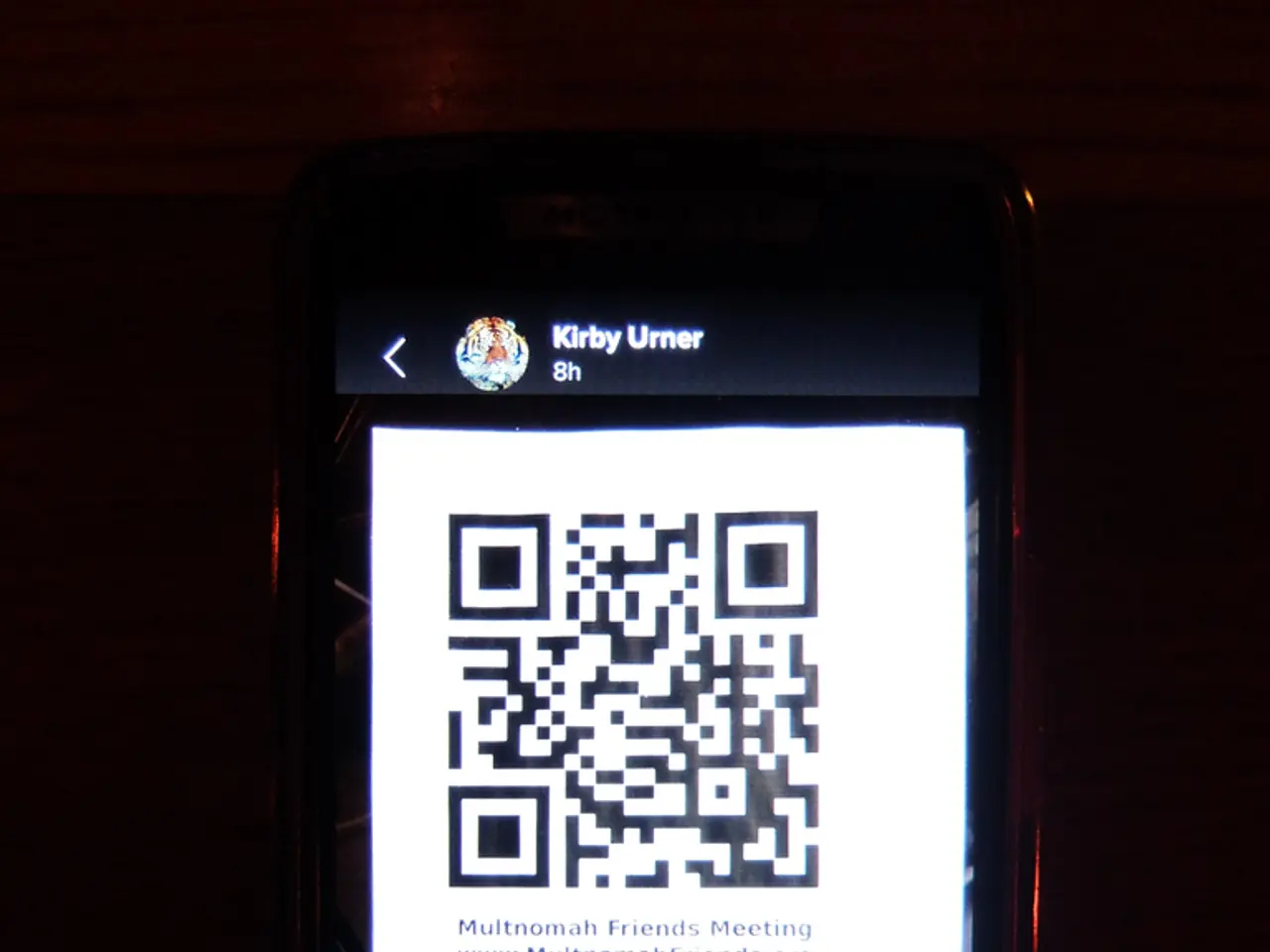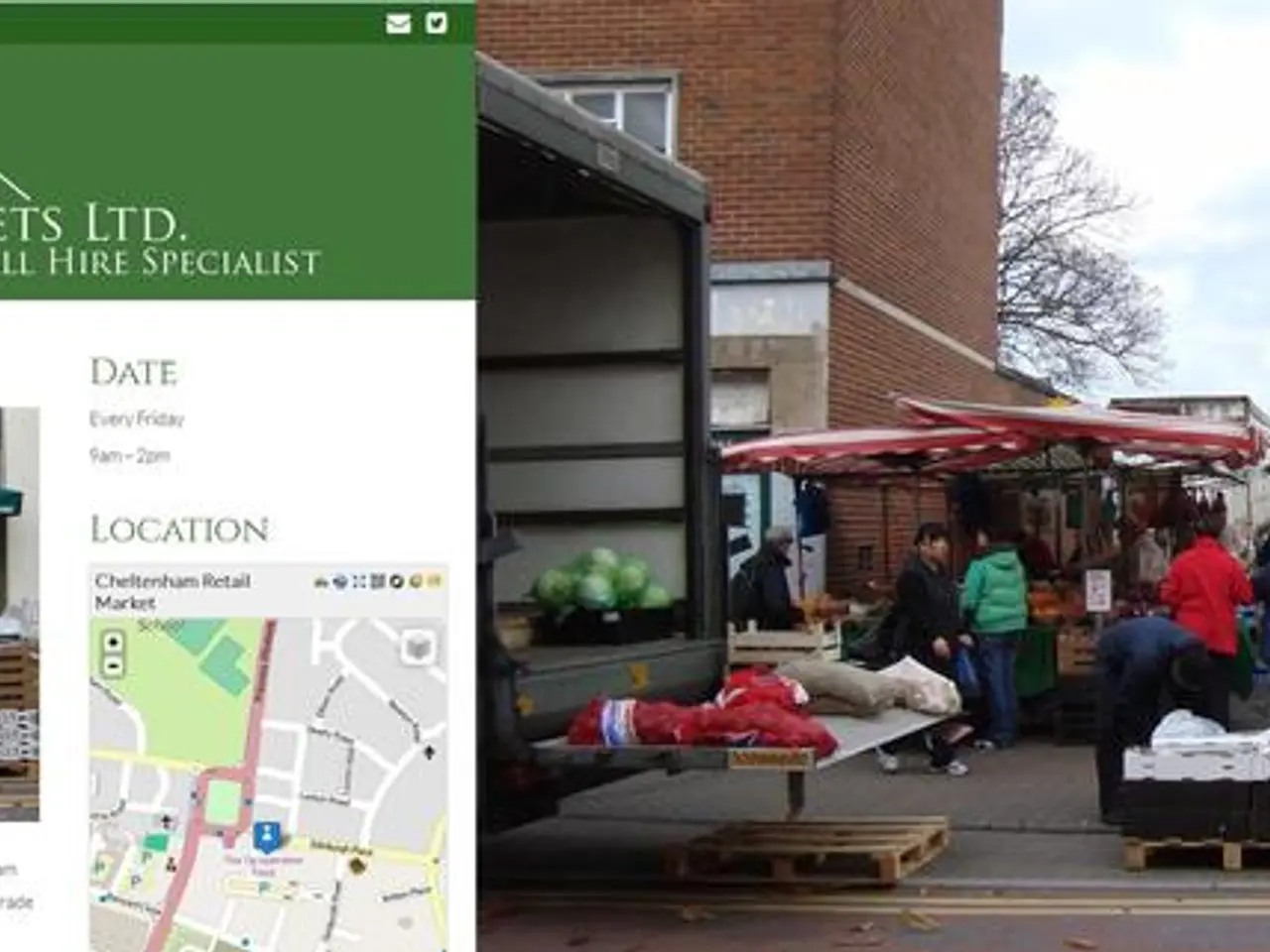Enhance Customer Interaction and Sales with QR Codes: A Laid-Back Tutorial for Smaller Enterprises
In today's digital age, QR codes have emerged as a versatile tool for businesses, offering a seamless bridge between the physical and digital worlds. These square barcodes can funnel users to specific locations such as websites, lists of links, or apps, making them an invaluable asset for marketing and engagement strategies.
One of the most effective ways to leverage QR codes is by linking them to apps, websites, or landing pages. This quick access can lead to increased conversions, such as app downloads or detailed product guides [1]. By sharing contact information instantly through vCard QR codes, businesses can make it easy for potential customers to save contacts and follow-ups [1].
Interactive menus or product catalogs can also be provided via QR codes, enhancing convenience and engagement, especially in retail and hospitality [1][2]. To encourage purchases and create urgency, businesses can offer discounts, promotions, or coupons via QR codes [2][4].
Mobile payments and contactless checkout are another advantage of QR codes, speeding up purchase processes and improving customer experience [2][4]. Feedback collection, such as customer reviews and survey responses, can be facilitated by linking QR codes to platforms like Google and Yelp [2].
Out-of-stock or additional products can be showcased online through QR codes on packaging or shelves, increasing sales opportunities beyond physical inventory [2][4]. Location-based marketing can deliver tailored promotions or menus to customers, track campaign performance by location, and optimize offers regionally [3].
QR codes can also drive loyalty program sign-ups and engagement by printing them on receipts or in-store materials linking to reward apps or exclusive offers [4]. By bridging physical and digital marketing assets, QR codes can extend customer interaction to digital channels, making the purchasing journey smoother [5].
Contact information such as email addresses and phone numbers can be easily shared via QR codes, preventing potential copying errors and forgetfulness. QR codes can be added to digital materials like email signatures and websites or printed materials, depending on the user's preference [5].
Encouraging interaction with social media accounts can be facilitated via QR codes, including platforms like LinkedIn, TikTok, and YouTube. Information, such as menus, instructions, and directions, can be securely shared via PDF QR codes [5].
Scanning a QR code requires a camera on an app, directing the user to a URL encoded within the code. Applications can be downloaded via QR codes, making it easy for users to engage with a business [5].
QR codes are cost-effective and offer high-impact solutions for various marketing needs. They can be created and used in just four steps: deciding the purpose, creating a QRNow account, filling in the details, and downloading the code for use [6]. Wifi access can be simplified for users by adding a wifi QR code near the router [6].
Dynamic QR codes can collect data for marketing analytics, such as time, date, and location of each scan [6]. The QRNow generator is recommended for creating QR codes, using AI-powered technology and offering customizable designs [7]. A vCard, a digital business card, can deliver all contact information in one simple place [7].
In conclusion, QR codes are a powerful tool for businesses, offering a multitude of benefits from streamlining the purchasing journey to fostering interactive engagement, improving data collection, and driving measurable business growth through QR code-driven campaigns [1][2][3][4][5].
- To boost conversions and increase customer engagement, small-businesses can offer immediate access to apps, websites, or detailed product guides through QR codes on marketing materials.
- Enhancing convenience, retail and hospitality businesses can supply interactive menus or product catalogs via QR codes, allowing customers to browse and make purchases or reservations with ease.
- QR codes can facilitate contactless transactions by linking to mobile payment platforms, creating a quick and seamless checkout experience, which benefits both businesses and customers.




